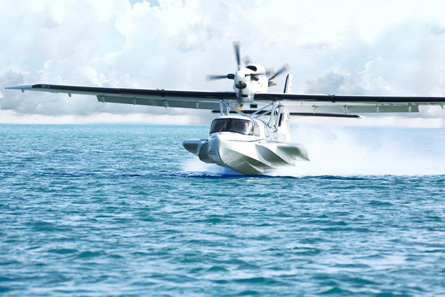Dornier Seawings plans to select the final assembly base for its Seastar CD 2 twin-engined amphibious turboprop in the third quarter of this year and will deliver the first of the 12-passenger aircraft 33 months later, the company says. "We have got a shortlist of three candidates with whom we are in an advanced stage of discussion," says Dornier Seawings chairman Conrado Dornier.
"The choice is between bases in Quebec, Canada - the most advanced of the three options - China; and India. We are talking with three prospective partners in those countries who will also help to fund the programme."
 |
|---|
Dornier Seawings Dornier plans to assemble up to 50 amphibious turboprops a year |
Dornier says he will not launch production until all the funding is in place. "We are looking at $100 million," he says. "The Canadian government has pledged a large part of that investment if we select Quebec, but the Indian and Chinese companies are also looking to team up with the Dornier family to jointly own the programme and bring the Seastar to market."
The Pratt & Whitney Canada PT6A-135-powered Seastar was originally unveiled in the early 1980s, but production was halted in 1991 because of a shortage of funding. "We made a number of subsequent attempts to restart production but these failed," says Dornier. "The Seastar already has European and US certification, so we plan to deliver the first 20 aircraft in the Seastar's original round dial configuration. It will also be fitted with a collision warning system for which we will be seeking a supplemental type certification."
Subsequent aircraft will be fitted with a glass cockpit, known icing capabilities, autopilot and air-conditioning, for which Dornier will also need an STC. Dornier Seawings has received 14 firm orders and 32 letters of intent for the $6 million Seastar to date. "We forecast a market for between 350 to 500 all composite Seastars between 2015 and 2025 and plan to build up to 50 aircraft a year," says Dornier. Asia is expected to account for about half of the demand. "There are tremendous opportunities [in Asia] as the infrastructure lends itself to seaplanes. China is an exciting market as it has just opened up the lower airspace to general aviation traffic. There is a large amount of water here and airport infrastructure isn't great," says Dornier.
The Eurasburg, Germany-based company is targeting the Seastar at four sectors: commercial operators for island-hopping, governments for special missions, high-net-worth individuals, and corporations for use as shuttles.
Source: Flight International



















